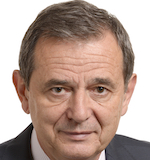
Aviation Fuels in Europe ReFuel EU Aviation: A route to net zero European aviation
As president of the European Parliament’s Sky and Space Intergroup (SSI) I have a constant concern about the aviation sector and on almost monthly basis I host multi-stakeholder discussions on the European aviation sector’s decarbonisation roadmap.
There is a common point of these debates that we have been organizing for almost 2 years: despite the very difficult situation of the European aviation industry – simultaneously affected by the Covid-19 crisis and the obligation of decarbonisation – all stakeholders support the environmental targets of the Green Deal and they are optimistic that we can achieve the green goals. However, the European aviation industry needs help.
Therefore, along with the legislative proposal on SAF (Sustainable Aviation Fuels), the European Commission should come with an incentive plan for the aviation sector. Given that the prices of green fuels (whether biofuels, synthetic fuels or hydrogen) are much higher than those of fossil fuels, in order to decarbonise but at the same time remain competitive, the aviation industry must be supported.
I have an ongoing dialog with the aviation industry and I can tell you that at this time, hydrogen is the great hope for reducing emissions.
Obviously, we need to design and to product hydrogen-powered aircraft. But the European Commission needs to understand that this is an endeavour that requires great financial investments, both public and private, in research and innovation.
However, in order for the demand for hydrogen not to be overwhelming and not to lead to blockages, it is necessary to continue our research for the development of alternative fuels, other than hydrogen, as is for example the case of synthetic kerosene. In addition, we must also consider the infrastructure needed for alternative fuels, mainly hydrogen, if we take into account the fact that hydrogen is part of all other alternative fuels.
Since the EC launched the Fit for 55% package, I kept on asking the Commission if they know what will be the total amount of electricity needed in 2030 and what will be the energy mix for generating this amount of energy. In its answer the Commission informed me that the projections in the MIX scenario, considered the central scenario by all impact assessments, indicate the gross electricity production of approximately 3,150 terawatt-hours (TWh) with the following proportions: 4% solid sources, 13% natural gas, 16% nuclear sources and 65% renewable sources, including biomass.
If we want the aviation industry to be able to develop all these solutions that aim to ensure a zero-emission target, we have to provide two essential things: a good regulation at Union level and strong funding for research and innovation.
As regards the regulation, the first and easy step to take is to adopt the Single European Sky Regulation. As rapporteur of the European Parliament in the SES file, I can assure everyone that SES is a simple and safe way to reduce aviation emissions. All studies show that the implementation of SES can lead to a reduction of about 10% in CO2 emissions.
Unfortunately, this simple possibility of reducing emissions is not supported by some Member States. Where does this opposition come from when everyone says in chorus that we are working together to reduce emissions, it is for me, as an SES rapporteur, incomprehensible. At the time this piece is being published a pilot can choose the direct route between two destinations or can use the new software that indicates the least polluting route. This system already exists in the Member State therefore, I do not understand why some Member States declare that this violates national sovereignty.
As previously highlighted, aviation solutions come through innovation. With the adoption of the Union budget for 2022, one of my pilot projects which is directly related to this topic was accepted for funding.
The EU Clearing House for Sustainable Aviation Fuels (SAF) proposes the creation of a database on sustainable aviation fuel consumption. This proposed pilot project supports the objectives within the Paris Agreement, the EU Green Deal, the EC Sustainable and Smart Mobility Strategy and the EASA Sustainable Aviation Programme.
It aims to facilitate the uptake of Sustainable Aviation Fuel (SAF) within the aviation sector and the subsequent reduction in both CO2 and non-CO2 emissions.
It is in the interest of all of us, legislators, industry and passengers, for the aviation to remain one of the handy options available when it comes to exercising our right to mobility in the EU.




